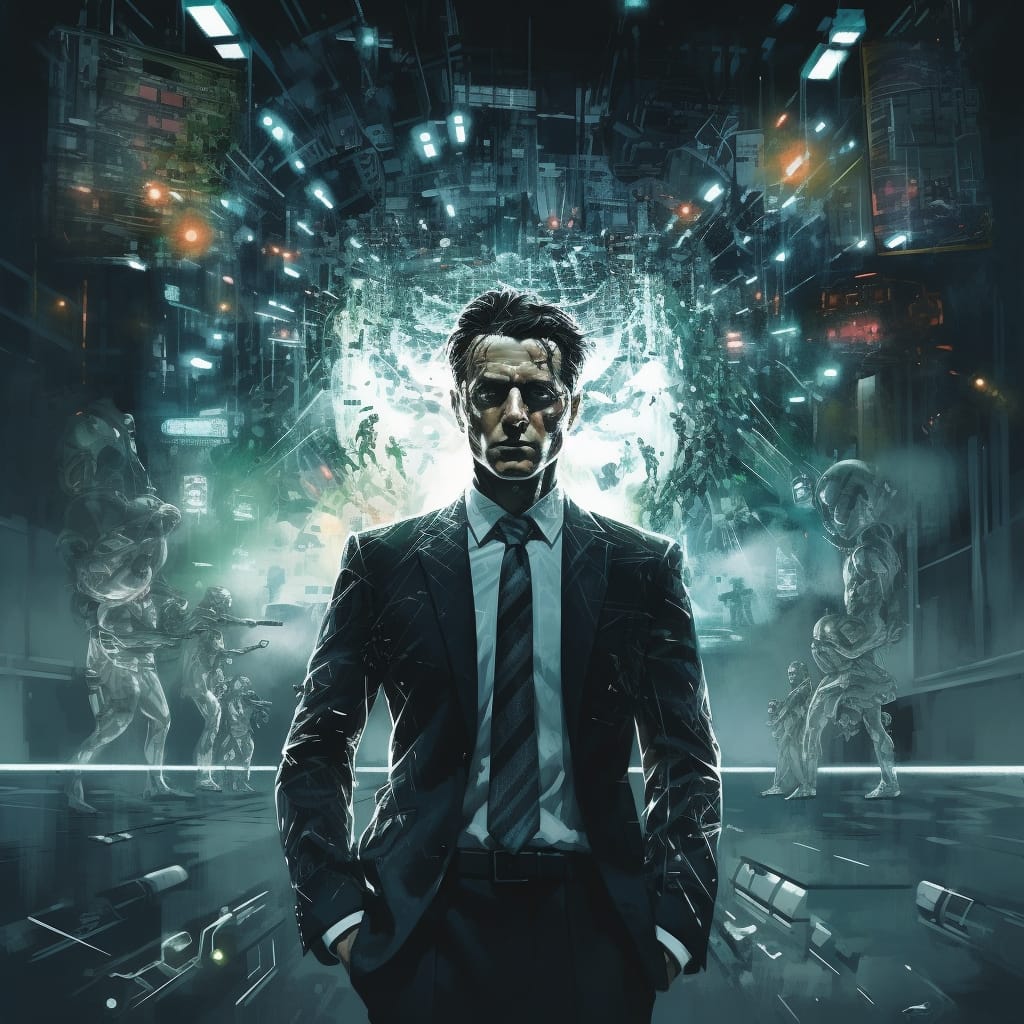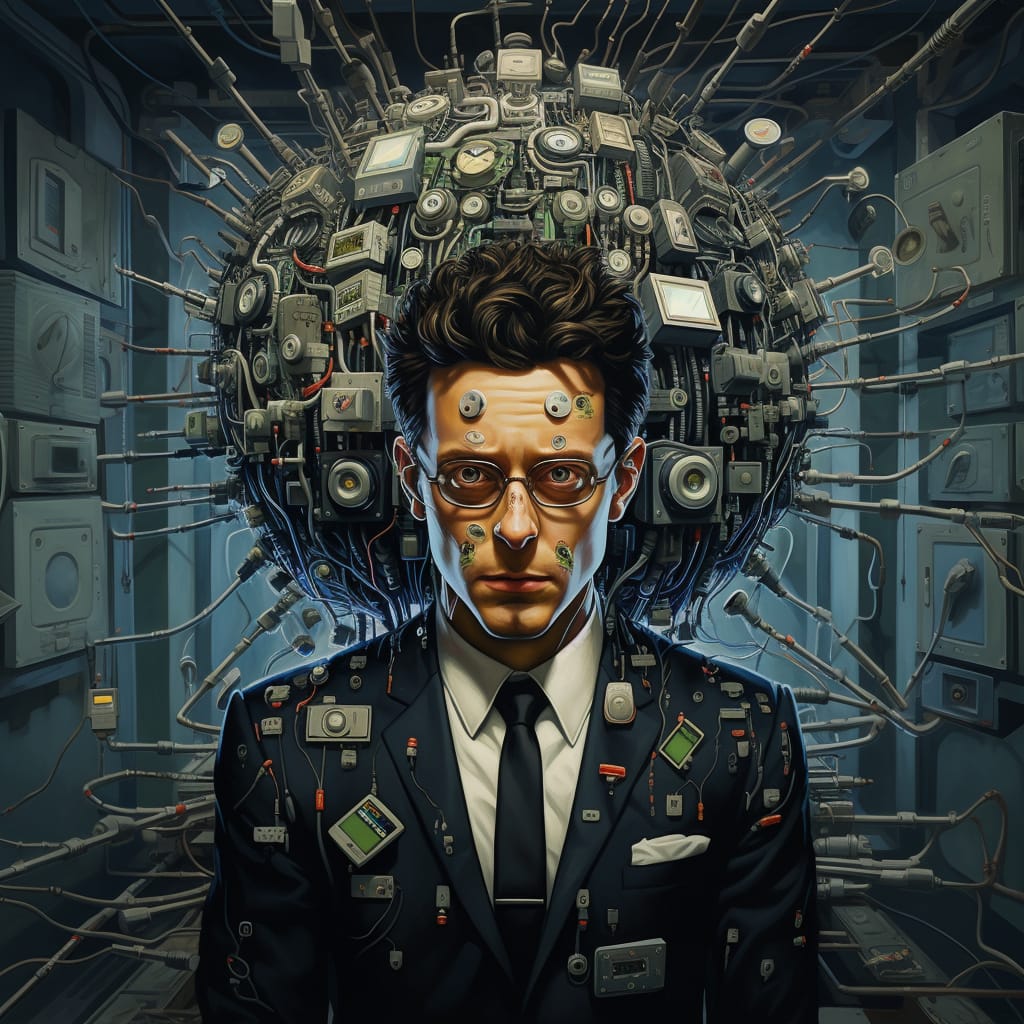Gibson's Johnny Mnemonic: On human empowerment and control
Johnny Mnemonic is a hymn and a warning to human empowerment and control through dermal chips and the control of biological neural networks.

Cyberpunk often provides the fragments of truth that ultimately make up the whole picture. And William Gibson (March 17, 1948, Conway, South Carolina, U.S.) is a true master of imagining what is inside the picture that often hides the reality. His short story 'Johnny Mnemonic' (Burning Chrome, 1981) is a hymn and a warning to human empowerment and control through dermal chips and the control of biological neural networks. In 1995, the story became a movie, directed by Robert Longo and starring a young Keanu Reeves. Gibson personally edited the screenplay with the director.
The movie takes place in the second half of January 2021 and imagines a world ruled by corporations and beset by a pandemic. Yikes. The pandemic in question in the movie, Nerve Attenuation Syndrome (NAS), doesn’t get a clear explanation in the film. Instead, it’s spoken of in vague terms, the apparent result of exposure to too much technology. “What causes it? The world causes it. This causes it! This causes it! This causes it!" a doctor named Spider (Henry Rollins) laments at one point, gesturing to various bits of tech. "INFORMATION OVERLOAD! All the electronics around you poisoning the airwaves.” (here)
Johnny big brain
The protagonist of William Gibson's cyberpunk tale, Johnny Mnemonic, is a neural data courier. Thanks to a cybernetic implant in his brain, he can store a superhuman amount of information in his head. The purpose is to deliver it - he is indeed a courier - to the buyers, whose can download it via a password. The plot is on Johnny's trying to elude a Yakuza assassin. The reason he is hunted by the Yakuza throughout the story is that he carries the encrypted formula for the cure for the evil of the century: NAS (Nervous System Attenuation Syndrome).
NAS or the Black Shakes, the physiological disease showcased in Johnny Mnemonic, has yet to rear its head, but the psychological impact of constant information demanding attention can have real consequences. (here)
To survive, he has to decode a message stored in a secure storage device implanted in his brain. When the client who holds the password is killed, Johnny turns to Molly Millions, Dolphin Jones, and the 'Lo Teks', Molly's anti-technology friends, to get some help.

A cancelled past
In order to make room in his brain to store information for his buyers, Johnny had his childhood memories erased, and doubled his memory capacity with an expansion. Johnny Mnemonic is, in fact, an enhanced human being, thanks to bio- and neuro-engineering capabilities built into his body, which have transformed him into a kind of cyborg (cybernetic organism). A possible scenario? In the TV series Westworld (dystopian science fiction western television series created by Jonathan Nolan and Lisa Joy that first aired on October 2, 2016, on HBO), the idea of a theme park of the future is placed in the context of betting and profiting on the likelihood that people will abandon their moral scruples when offered the chance to let their latent aggression (Freud's death drive) run rampant to the point of raping and killing "perfect" bio-engineered human simulacra under the guise of "host/hostess".
AI- human merge
The idea that dominates the current experimental process of implanting dermal or neural chips is this: If we are destined to succumb to the power of AI, we might as well merge with it. After all, Elon Musk has already said, on the Joe Rogan Experience podcast channel, that smartphones have already turned us into something akin to cyborgs, a human-technology link that needs to be strengthened. It is certainly no coincidence that Tony Stark's actor in Iron Man (Robert John Downey Jr. in 2007) was inspired by Musk's own ideas, according to Ashlee Vance in Musk's own biography.

The Brain project
DARPA (Defense Advanced Research Projects Agency), the U.S. Army's science and technology arm), has been working for years on the Restoring Active Memory (RAM) project to implant a neural docking device in the brains of soldiers with a dual purpose:
1. to record soldiers' memories;
2. to stimulate the right hemisphere of the brain to speed up the data acquisition and storage process and reduce reaction time in combat.
Public information, explored in depth in Annie Jacobsen's investigative book The Pentagon's Brain: An Uncensored History of DARPA. Operation Brain is a project desired by Barak Obama and, according to Jacobsen, is aimed at creating cyborg soldiers in state-of-the-art AI to allow for the ultimate mind uploading of human beings.
Johnny Mnemonic neuromorfic cyber brain is not that far.
Read also
The Scientific Case for Brain Simulations
